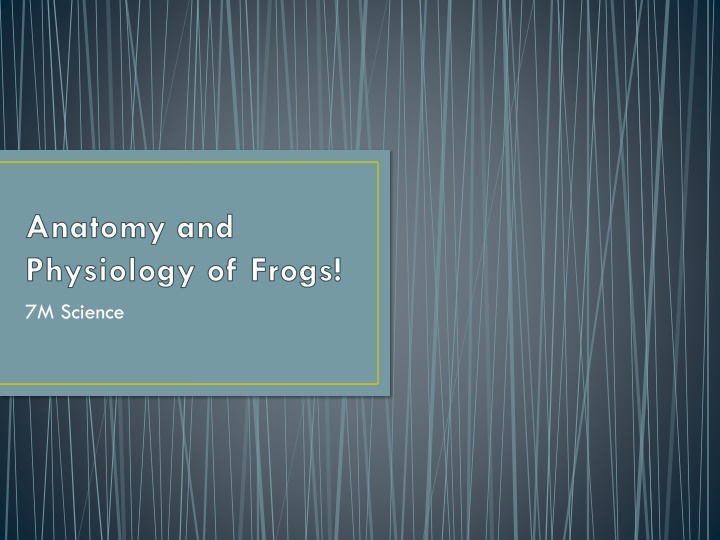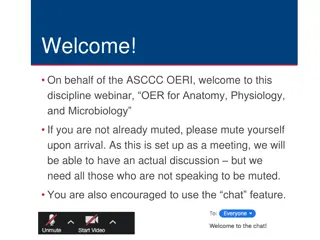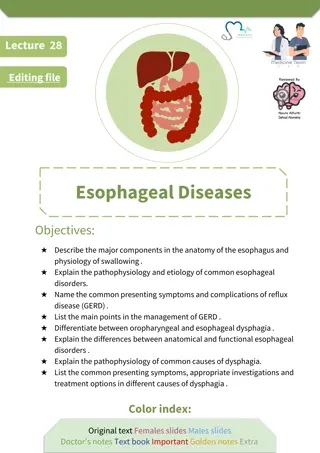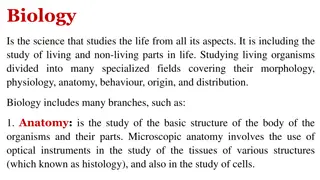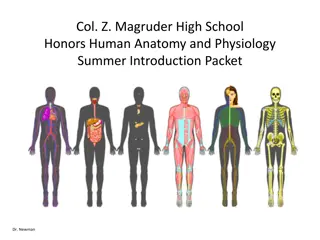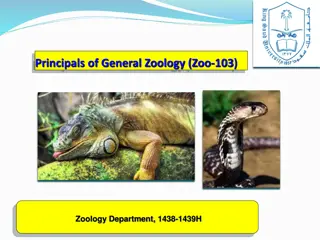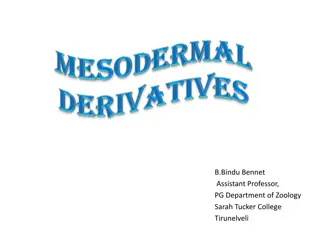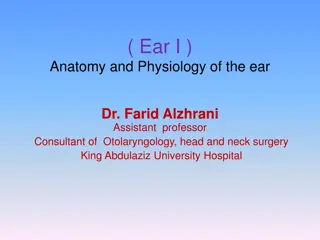A Comparison of Human and Frog Anatomy and Physiology
Humans and frogs share many similarities in their organ systems such as lungs, digestive, circulatory, skeletal, and muscular systems. However, there are also significant differences in body configuration, respiratory system, skeletal structure, and reproductive system. Frogs have unique features like cutaneous respiration, external fertilization of eggs, and a three-chambered heart. Understanding these similarities and differences provides insights into the evolution and adaptation of different species to their environments.
Uploaded on Sep 18, 2024 | 9 Views
Download Presentation

Please find below an Image/Link to download the presentation.
The content on the website is provided AS IS for your information and personal use only. It may not be sold, licensed, or shared on other websites without obtaining consent from the author.If you encounter any issues during the download, it is possible that the publisher has removed the file from their server.
You are allowed to download the files provided on this website for personal or commercial use, subject to the condition that they are used lawfully. All files are the property of their respective owners.
The content on the website is provided AS IS for your information and personal use only. It may not be sold, licensed, or shared on other websites without obtaining consent from the author.
E N D
Presentation Transcript
Anatomy and Physiology of Frogs! 7M Science
Humans & amphibians have lots of similarities! Lungs: We both have 2 lungs used for breathing. We both have a mouth, esophagus, stomach, pancreas, liver, gall bladder, small intestine, and large intestine. Digestive System: Circulatory System: We both have arteries, capillaries, veins, blood, and a heart
Humans & amphibians have lots of similarities! Brains: Although we both have brains, ours is more complex. Skeletons: We both have a skeleton that provides a framework for our bodies, protects our internal organs, and allow us to move. Muscles and Connective Tissue: We both have these tissues that hold our skeletons together.
Although we have many of the same organs and systems, they work differently in amphibians than they do in humans! Body Configuration: A frog s heart, lungs, and digestive systems are all found in one single hollow space. Our internal organs are housed in three distinct cavities: chest, abdomen, and pelvis. Respiratory System: Frogs breathe through their skin. Known as cutaneous respiration , this process allows oxygen to pass through the skin and directly into the bloodstream. Frogs also have neither ribs or diaphragms; body parts that help humans breathe. And, their chest muscles are not used for breathing. Although both humans and frogs produce eggs, frog eggs are fertilized externally. Also, reproductive organs are housed internally in both males and females. Reproductive System:
Although we have many of the same organs and systems, they work differently in amphibians than they do in humans! Skeletal System: Frogs have 1 forearm and 1 lower leg bone, while we have 2. Frogs lack several vertebrae and do not have a pelvis. They also have structures not found in the human skeleton i.e. the urostyle. Circulatory System: A frog has a 3 chambered heart (2 upper chambers (atria) and only 1 lower chamber) compared to the 4 chambered heart a human has.
Humans and amphibians have lots of differences too. We humans don t have any of these distinctly amphibian features! Nictitating Membrane: A clear, retractable membrane that protects each eye. Tympanic Membrane: A circular eardrum located behind each eye. Eustachian Tube: Tube that connects the middle ear to the mouth, aka the buccal cavity. Mucous Glands: Located in the skin, these glands secrete mucous to keep the skin moist. Granular Glands: Glands that secrete sticky, bitter substances to make amphibians unattractive to predators.
Humans and amphibians have lots of differences too. We humans don t have any of these distinctly amphibian features! Vomerine Teeth: Two rough pads on the roof of the mouth used to hold prey. Cloaca: A cavity that collects materials from intestines, urinary bladder, and reproductive organs. A slit-like opening from the throat to the lungs that plays an important role in breathing. Glottis: Gills: Structures that help amphibians breathe while they are tadpoles.
